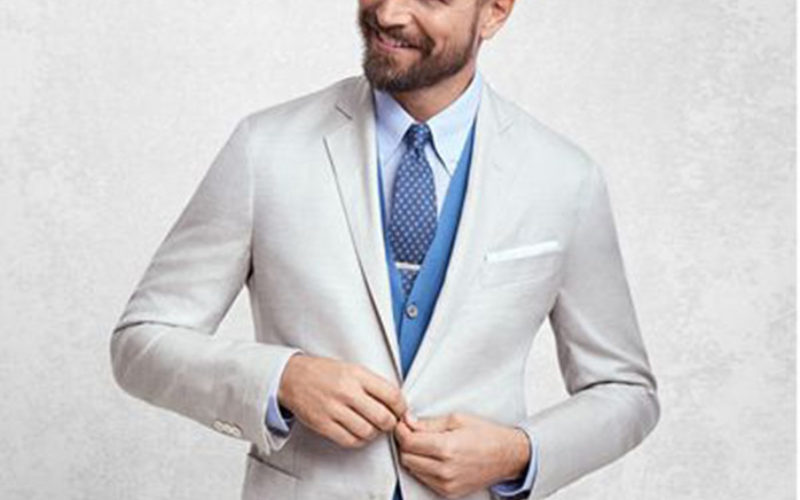Q. I am often uncertain what colors can be matched with my jackets other than the same color or white. I have a red tie with a small pattern in yellow and white; can I wear that with a yellow shirt? And I have a blue sport jacket with red lines; would that work with a red polo for casual business?
A. Yes, both of those will work. I’m glad you’re aware of the importance of color – not only which color to wear, but how to put colors together. Color is the dominant factor in clothing selection and in dressing to look your best. It can say a lot, depending on the kind of image you want to convey.
If a man shows up at an industry-wide meeting, dressed in a dark blue, traditionally-cut suit or in a well-tailored navy blazer, everyone who looks at him is reassured, “He’s okay. He’s one of us.” Many will ask, all this from the color of a suit or jacket? I assure you, yes, it is.
Learning as much as you can about how to create handsome color-coordinated looks is a very worthwhile use of your time. First, know the rules; then you can break them. Color is free; but using it well makes a priceless contribution to how great you can look. Basically, there are three acceptable colors/color families for most men’s clothing: blue, gray/black, and tan/brown. Here are some easy-to-follow, useful tips for working with these three colors.
BLUE – Just about every shade of pure blue works well in a man’s wardrobe, but with different effects. Navy is elegant, medium-blues are versatile, light shades of blue are flattering, and bright royal blue adds spark to a casual combination. You can wear and combine blues in many ways.
- A navy suit or blazer goes with shirts in most solid colors, including white, blue, pink, pale yellow, and ivory, as well as patterns with varying stripes, checks, and subtle or bold plaids. The red polo you asked about would certainly work with your blue jacket.
- Shirts (and sweaters) in sky blue, medium-blues, and deeper shades of blue all work well with many dressy and casual looks.
- Aside from jeans, blue pants seem to be the least useful pairs in a man’s closet.
- Clashing-color problems occur when mixing hybrid blue colors that are dependent on “ish” for their existence, such as greenish-blue (aqua or teal) and purplish-blue. These work alone, but when mixed with each other, they are jarring and end up looking like a mistake.
GRAY/BLACK – Grays, from the lightest gray-and-white shirt to the darkest charcoal sports jacket or black suit, are all in the gray family.
- Gray is extremely versatile for suits, tweed jackets, dress trousers, sweaters, and ties.
- Its only negative is that it is not a flattering color for many complexions (that may explain why you don’t see many gray shirts). You can get around that by choosing a shirt that works well with your complexion (examples: blue, white, pink). The shirt will be closer to your face than the gray or black jacket.
TAN/BROWN – Light shades of brown are mainly seen in classic, go-everywhere khaki chinos, in tweed jackets, and in tan summer suits. Darker browns are not as appealing, or as acceptable.
- In today’s informal dressing, khakis are men’s most versatile pants. They go nicely with tops in every shade of blue for blazers, dress- and sport-shirts, sweaters, polos, even T-shirts.
- The second best color to pair with tan/khaki is yellow. This works beautifully in shirts and ties IF you happen to be a person who looks good in yellow (many do not).
- Accent patterned items that combine yellow and red (creating an illusion of orange) such as the tie you described, work nicely with a yellow shirt, with khakis, or with a tan suit.
The color-coordinating strategy of repeating colors (that is, any time you use a color more than once in a combination) is a big plus. An important element in classic two-color dressing, it is sure to make you look your best.
Please send your men’s dress and grooming questions to MALE CALL: Lois.Fenton@prodigy.net









